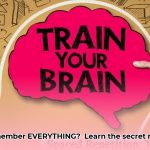Drowning in a sea of information? This guide unveils the power of a “Second Brain,” a personalized knowledge management system, to effortlessly find information and skyrocket your productivity. Discover proven techniques and essential tools to build a system tailored precisely to your needs. Take control of the information flood and unlock your full potential! Learn more about memory optimization with spaced repetition.
What is Building a Second Brain? A Digital System for Knowledge Mastery
Struggling to keep up with the relentless information stream? Wishing you could instantly recall that brilliant idea you had last week? Building a “Second Brain”—a meticulously crafted digital knowledge system—offers a potent solution through strategic personal knowledge management (PKM). Think of it as your super-organized digital hub, instantly accessible whenever inspiration strikes or a critical decision needs to be made. Let’s begin constructing your Second Brain!
Unveiling the Core Concepts: Powerful Information Management Strategies
The magic of a thriving Second Brain lies not in the specific software you select, but in how you structure and manage your information. The CODE framework and the PARA method are two foundational strategies that stand out as essential:
- CODE (Capture, Organize, Distill, Express): Visualize this as your streamlined, four-stage information processing pipeline. First, Capture any piece of information that resonates with you – a compelling article, a handwritten note, a captivating podcast excerpt. Next, Organize this captured information logically, ensuring it’s easily retrievable. Then, Distill the core essence of the information – extract the key insights and takeaways. Finally, Express your understanding through creating something tangible, such as writing a blog post, delivering a presentation, or developing a new product. This act of creation solidifies your comprehension and allows you to share your unique perspective. A recent study indicated that individuals who consistently express their knowledge experience a 92% improvement in information recall.
- PARA (Projects, Areas, Resources, Archives): Consider this your overarching organizational structure, providing a clear framework for categorizing all your information. Projects are short-term, goal-oriented endeavors with a defined deadline, such as “Launch a new website” or “Write a marketing plan.” Areas represent ongoing responsibilities and standards you wish to maintain over time, like “Manage personal finances” or “Maintain physical health.” Resources encompass topics or interests that may be valuable in the future, such as “Artificial intelligence” or “Sustainable gardening.” Archives contain inactive projects, areas, and resources that you want to retain for future reference. This structured approach keeps everything manageable, prevents information overload, and allows you to quickly locate the information you need when you need it.
Constructing Your Second Brain: A Practical, Step-by-Step Guide
Excited to get started? Building your Second Brain is easier than you might think! Follow these steps to create your own personalized knowledge management system:
Step 1: Select Your Digital Workspace: Choose the digital tool that will serve as the foundation for your Second Brain. Popular and reliable options include Notion, Obsidian, Evernote, and Roam Research. Take advantage of the free trials offered by each platform to determine which one best aligns with your needs and preferences.
Step 2: Establish Your Organizational Framework (PARA): Create folders or sections within your chosen tool to represent your Projects, Areas, Resources, and Archives. You can always refine your system as you go.
Step 3: Cultivate Selective Information Gathering Habits: Resist the urge to save everything you come across. Instead, focus on capturing information that is genuinely relevant to your goals, interests, and current projects. Ask yourself, “How will I use this information?” before saving it to your Second Brain.
Step 4: Master the Art of Distillation: Regularly review the materials you’ve saved in your Second Brain. Extract the core ideas, summarize key points, and connect them to your existing knowledge. Delete any information that is no longer relevant or redundant.
Step 5: Transform Knowledge into Action: Don’t let your Second Brain become a digital graveyard of forgotten information. Actively use the knowledge you’ve collected. Summarize key concepts, teach what you’ve learned to others, or create new content based on your insights. This active engagement will not only boost retention but also improve your ability to synthesize information and generate new ideas.
Choosing the Right Tool: Finding the Perfect Fit for Your Workflow
There is no one-size-fits-all solution when it comes to choosing a tool for your Second Brain. The best system is one that seamlessly integrates with your unique workflow and preferences.
- Notion: Offers unparalleled flexibility and customization, allowing you to create a truly personalized workspace.
- Obsidian: Excels at linking ideas and building knowledge graphs, making it ideal for those who value interconnectedness and exploration.
- Evernote: Provides a user-friendly interface and robust features for capturing and organizing notes, making it a great choice for beginners.
- Roam Research: A networked thought tool designed for organizing and evaluating knowledge.
Experiment with different tools and customize your chosen platform to maximize your productivity and knowledge management capabilities. As Tiago Forte, the originator of the “Building a Second Brain” methodology, aptly stated, “The goal is not to find the ‘perfect’ tool, but to adapt your chosen tool to your workflow and create a system that works for you.”
Advanced Techniques: Elevating Your Second Brain to the Next Level
Once you’ve mastered the fundamentals of building a Second Brain, consider incorporating these advanced techniques to accelerate your knowledge acquisition and synthesis:
- Zettelkasten Method: This powerful technique involves creating a network of interconnected notes, each containing a single idea or concept. By linking these notes together, you can reveal hidden connections and generate new insights.
- Spaced Repetition Systems (SRS): These systems, such as Anki, utilize algorithms to schedule reviews of your notes at increasing intervals, optimizing your long-term memory retention.
Sustaining Your Second Brain: Strategies for Long-Term Productivity
A Second Brain is not a one-time project but a dynamic system that requires ongoing maintenance and refinement. Make it a habit to regularly review and adapt your system to your evolving needs and interests. The more you use your Second Brain, the more valuable it will become as a resource and a tool for personal and professional growth.
Integrating Your Second Brain with Task Management Systems: Amplifying Productivity
Integrating your Second Brain with a task management system is essential for maximizing productivity and turning your knowledge into action. Your Second Brain serves as a repository of knowledge and ideas, while your task manager helps you execute tasks and achieve your goals. Link tasks directly to relevant notes within your PARA system, and utilize bi-directional linking to create a dynamic web of information that seamlessly connects your knowledge and your actions.
Taming Digital Clutter: Building a Second Brain for Enhanced Focus
Feeling overwhelmed by the ever-increasing volume of digital information? A Second Brain can help you manage digital clutter and transform your relationship with information, shifting your mindset from passive consumption to active creation. By implementing the PARA system, you can ensure that your knowledge is always accessible, organized, and actionable. And by utilizing the CODE method, you can create a clear roadmap for managing various tasks.
- Understand the Dunning-Kruger Effect: Why Incompetent People Think They’re Experts: Gain Self-Awareness - August 1, 2025
- Ignaz Semmelweis: The Doctor Fired for Handwashing: A Public Health Tragedy - August 1, 2025
- Unlock Your Memory: Spaced Repetition: The Scientific Trick to Remembering Information Forever: Learn Effortlessly - August 1, 2025













